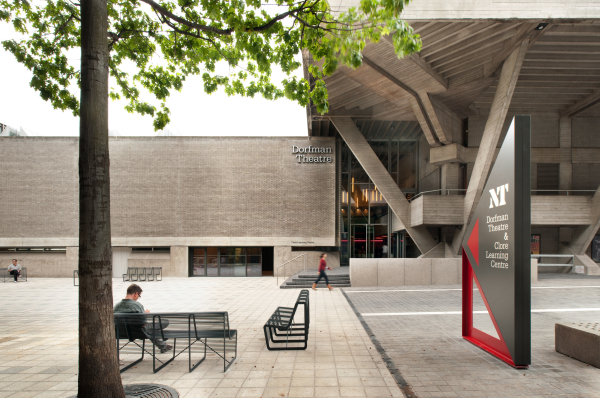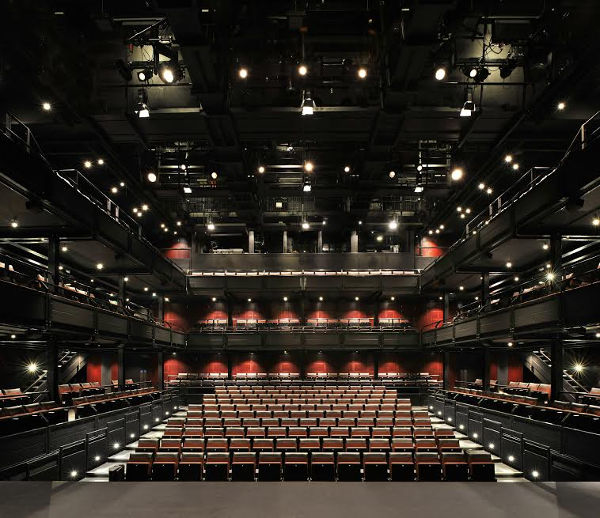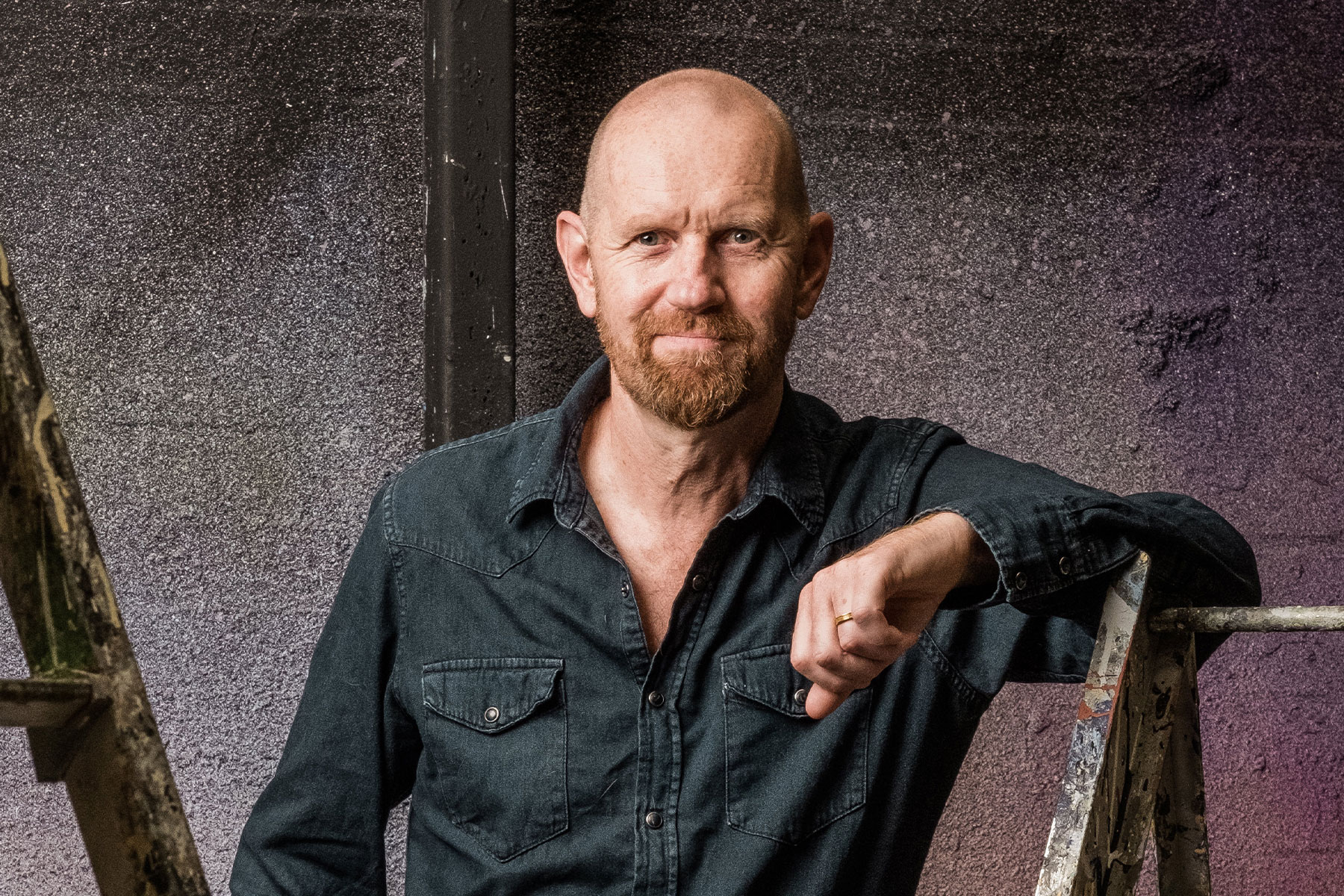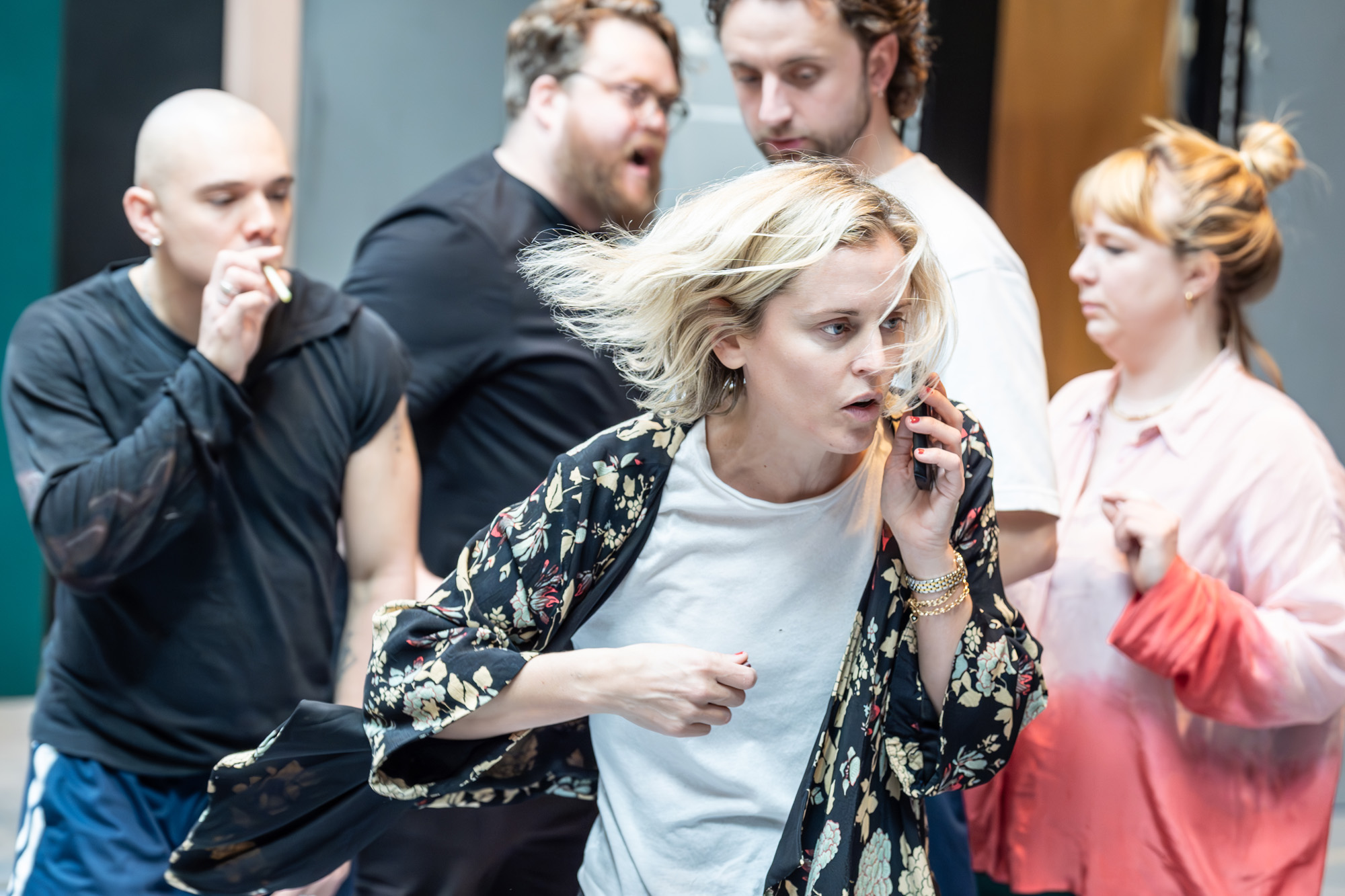Michael Coveney: National unveils Dorfman as RSC channels Downton Abbey

© Philip Vile
An hour before we put on our dancing shoes on Monday night for the opening of Here Lies Love in the Dorfman, the re-named Cottesloe, critics were given a quick guided tour round the £80million rebuild by outgoing executive director Nick Starr, his successor Lisa Burger and architect Paddy Dillon.
On the Dorfman side of the building, the frontage is now opened up to the river with a spacious new foyer and newly welcoming, much more accessible bookshop and, on the corner a splendid new bar called the Understudy where presumably the understudies can spend their evenings hoping not to be called on stage. The main new features, though, are two large educational studios, one of them the same rectangular shape as the still thriving NT Studio next to the Old Vic, and huge new scene painting and set building docks.
As from this week, the public can wander through a walkway and see all the work going on: the galleon and rigging for Treasure Island, all the props and costumes in raw condition, banging, building, shouting, rushing… this could be the best free show in town, providing only the nation's second backstage as a spectacle opportunity (the glass-walled Curve in Leicester is the other one); question is, does this "accessibility" to the process of making theatre make or mar the magic? And might not the workforce be tempted to play up to the gallery and slap on more paint and glitter than is strictly necessary?

© Philip Vile
Either way, it all looks terrific, and getting in and out of the Dorfman is far easier than it was in the Cottesloe, though I noticed a bit of first night audience gridlock as the queue for the cloakroom cut right across the exit streams from the theatre. The shape of the new auditorium has been made slightly squarer, less rectangular, and there is seating now for 450 (though most were bopping on the floor during the disco-dancing promenade performance of Here Lies Love).
All the new space for the paint dock comes from Lambeth Council – as always with rebuilds you immediately can’t remember what was there before; in this case, rubbish bins, mostly. And there are some new production offices and studios for designers. I often think that theatre rebuilds and refurbs are devised as ways of spending money and not getting on with the real job of putting on plays. But what's happened over recent years at the Royal Court, the Birmingham Rep, Chichester and now the National has been spectacular and begins to make Andrew Lloyd Webber's point about completely re-modelling West End theatres all the more urgent and sensible. And I don't see at all why the government shouldn't earmark a cool billion or so (a drop in the ocean) to get the work started.
Maintaining our great buildings and houses was a theme of Alan Bennett's last play People at the National, and is a running theme of Downton Abbey on television. Lord Grantham himself – aka Hugh Bonneville – must have felt perfectly at home as he sat in the stalls at yesterday's double-bill opening in Stratford-upon-Avon of Love’s Labour’s Lost and Love’s Labour’s Won, the latter play better known as Much Ado About Nothing. For Christopher Luscombe's highly enjoyable, crowd-pleasing productions, sparkily led by Edward Bennett and Michelle Terry (see our interview below), self-consciously reference Downton throughout (there’s even a credit in the RSC programme for Downton‘s historical advisor, Alastair Bruce), the action of both plays set on a replica (designed by Simon Higlett) of Charlecote Park, an Elizabethan Downton.
The conceit works very well, each play divided by the Great War. Both comedies have always thrived when given a specific social setting. Love’s Labour’s has been 19th century landscape and silk, 20th century hedonism as well as Edwardian, as here; while Much Ado has been a Sicilian swirl, a swimming pool farce (Simon Russell Beale and Zoe Wanamaker at the National), and Dad’s Army (at the Open Air Theatre). There’s no forcing of the tone at Stratford, but there is an increasingly soft focus as the action darkens with the slander of Hero and disruption of her wedding day. Still, Downton fans will have a field day.
Charlecote Park, just outside Stratford, is where the boy Shakespeare was alleged to have stolen a deer. In a charming programme note, Judi Dench recounts how, when she lived in a house next to the vicarage in Charlecote, she found a young deer in the road when driving home from the theatre one night with her husband, the late Michael Williams. They managed to get it back into Charlecote Park. The next morning, the police knocked on her door saying she and Michael had been reported as trying to steal a deer from the park. In fact, what they were doing, in all probability, was returning the one the baby Bard had smuggled out four centuries earlier.










